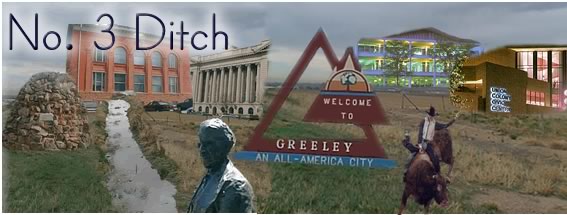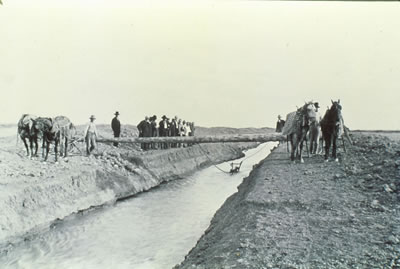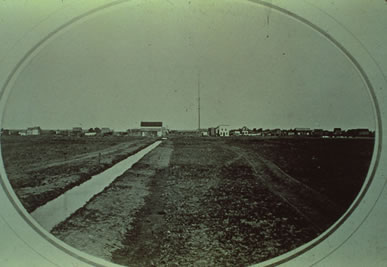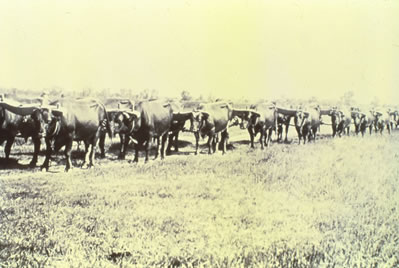
 |
||
 |
||
 |
||
 |
||
 |
||
 |
||
 |
||
 |
||
 |
||
 |
||
 |
||
 |
||
 |
||
| No. 3 Ditch | |||||
Greeley needed to have water to grow crops. Nathan Meeker got the idea for using irrigation ditches from a trip he took to Utah. He saw communities using ditches for their crops and thought they would work for the new colony. Robert Cameron and H.T. West were given the job to plan the town and the No. 3 ditch. The ditch was dug using horses, oxen, mules and a tool like a plow. The ditch was begun in May of 1870 and finished June 10, 1870. The ditch begins at the Cache La Poudre River. It empties into the Platte River. The ditch is important for two reasons: it was the first decreed ditch in the USA, and the water law "First in time has the first rights" came from it. On May 16, 2009, the No. 3 Ditch New Computerized Headgate was dedicated. |
|||||
| The historical pictures are from the District 6 Greeley, Colorado - Birth of a City slideshow. Click on the thumbnails to see a larger picture. | |||||
 |
|||||
|
Here are the teams of oxen that were used to plow the ditches or canals. |
Here are horses working on the ditch. | ||||
 |
|||||
|
Here is a picture when the water was released to Ditch No. 3. The ditch is going into town. |
Here is a short clip of the Headgate on No. 3. This was taken on the Rededication Day May 16, 2009. | ||||
 |
 |
 |
 |
 |
 |
 |
 |
 |
|||
| These are pictures taken by the Headgate of No. 3 on the Rededication Day. Click on the thumbnail to see full-sized. Close that window to return to this page. | |||||
